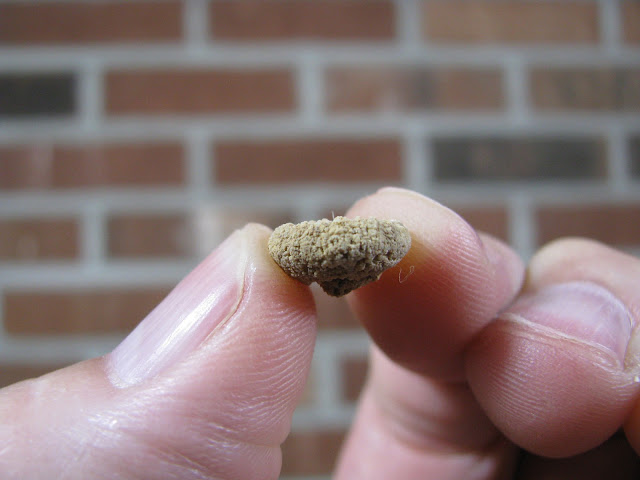One of the more recognizable corals that I have found from the Jeffersonville formation is Thamnopytchia. I've found it before in the similarly aged Mahantango formation (see link below) in Pennsylvania as well as in New York. I identify this coral by the round, finger like growth, the regularly spaced corallites, and the surface ornamentation that looks like small dots or bumps.
Since this is from the Jeffersonville limestone I chose to refer to the book by Erwin Charles Stumm; "Silurian and Devonian Corals of the Falls of the Ohio". to help ID and found a possible match on page 70, plate 75, fig. 14-16, 18-20. to Trachypora vermicula. Past research has informed me that the genus Trachypora is no longer used and is now called Thamnopytchia. Therefore I will label these specimens as Thamnopytchia vermicula.
This is the largest piece I have found to date and it shows evidence of preservation by the Beekite form of quartz.
Same specimen rotated 120 degrees from above photo
Same specimen rotated 120 degrees from above photo
A cross section through the coral that shows the "V" shaped corallites.
These next two specimens preserve some of the surface ornamentation of the coral.
Compare these specimens to some that I've collected from the Mahantango formation of Pennsylvania.
I collected these specimens from the Jeffersonville formation (Devonian, Eifelian stage) near Louisville, KY
References: Stumm, E. C. (1964). Silurian and Devonian corals of the falls of the Ohio. New York: Geological Society of America.


















































